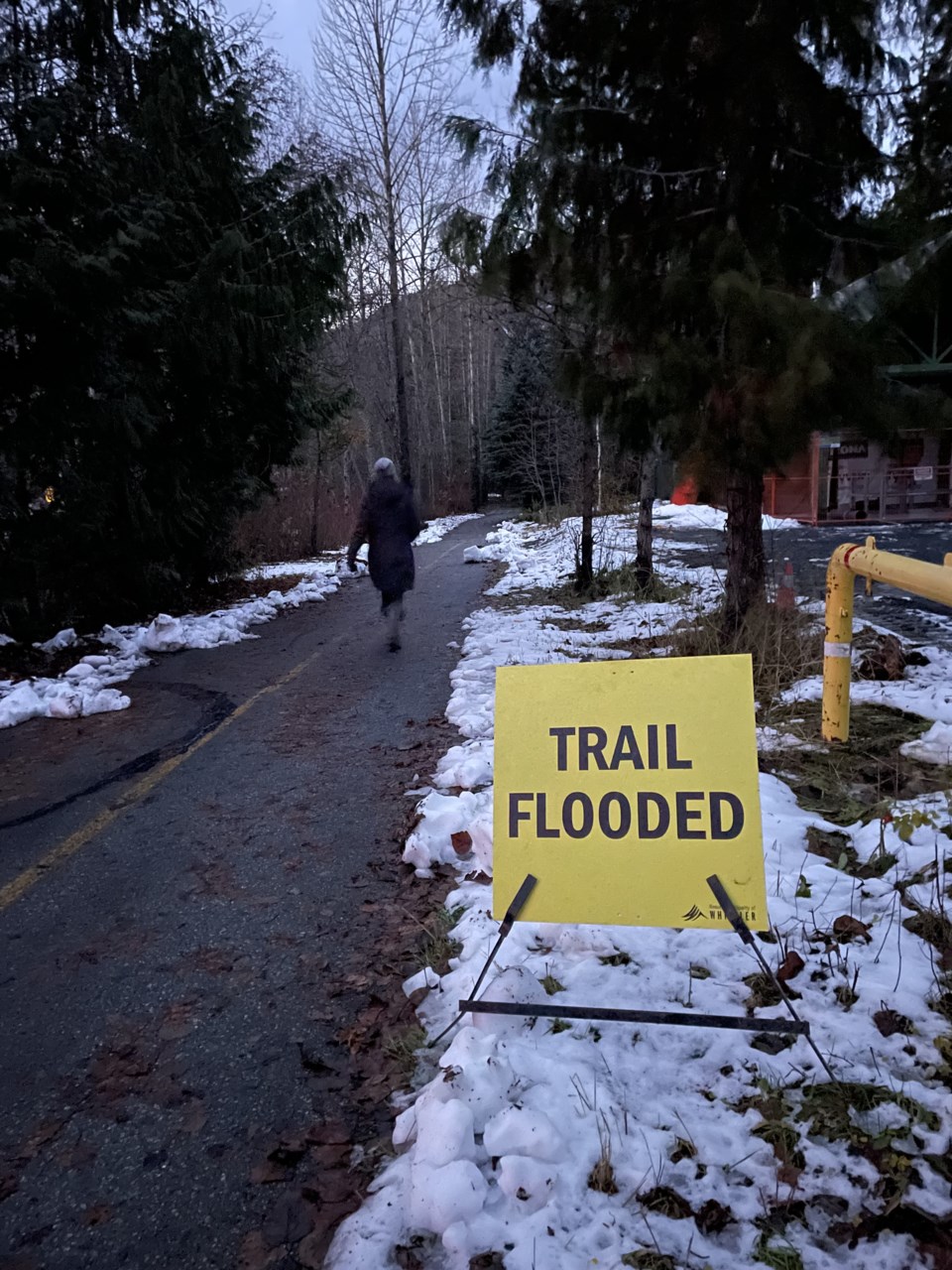One generally has to love precipitation of all kinds to live on the West (Wet) Coast.
But honestly, what has been happening with the weather this fall (or even this year) is beyond anything I have experienced in the 25 years I have lived in Whistler.
On one hand we had a blissful snowfall to the valley that had everyone excited and many heading out to the backcountry to catch some turns a few days ago. Then in the blink of an eye, another “atmospheric river” blew in, lashing us with more than 113 millimetres of rain in just a few days.
And then it just kept raining… though it looks like it was slushy snow in the alpine.
Not sure how wet it was just looking out your window? Well, this last week saw the wettest day on record ever in B.C. And that’s just 142 days since B.C. saw its hottest day on record.
I had to laugh (not really) at a few tweets this week as we hunkered down and watched in horror at the total flooding of Merritt, the plight of those trapped between two landslides on Highway 7 and the washout of a significant bridge on the Coquihalla Highway. One tweet told us to “grab the unicorns first this time” and another described B.C.’s seasons now as only “flood and fire.”
The average rainfall in October is generally around 154 mm—this year we saw 195 mm fall. For November—always our wettest month—we usually see about 190 mm. Incredibly, at press time, we have seen 233 mm already!
This is our fifth atmospheric river this season (normally we don’t even see one until November)—and while backcountry adventurers have found powder on their alpine ventures, they have also experienced mashed-potato slush, pouring rain, and avalanches too.
When I was thinking of the excitement we all felt looking at the snow creeping down the mountain I stopped for a minute to consider this emotion. It’s as if collectively we are already preparing for when this will be unusual.
I say this as I recall that when my kids were pre-school age (they are now in their early 20s), there was nearly always several centimetres of snow on the ground when we celebrated Halloween, just as there used to be too much snow outside to consider outdoor Easter-egg hunts. Not so these days.
Back in 2018, Pique interviewed Michael Pidwirny, an associate professor of earth, environmental and geographical sciences at the University of British Columbia Okanagan about research he was carrying out on Whistler’s long-term snowfall rates.
At that time he said: “Whistler will gradually change—it can’t escape the fact that there will be warmer winters.”
And I’d say his predictions for more pineapple express weather systems are clearly coming true. On his current blog he describes the weather patterns at 154 ski resorts and in reading it you understand that, with the current climate predictions coming out of COP26 (increases of between 1.8 and 2.4 Celsius above pre-industrial levels), by 2055, Whistler’s winters will be like the disastrous ski season of 2014-‘15. Pidwirny predicts that quality ski seasons will only occur every two to three years out of 10.
This is obviously going to have a devastating impact on the resort. From mundane things such as hiring practices (how do you hire in November for a ski season that may see little or no snow and therefore fewer visitors) to adapting to rain in the valley year-round, our very way of life is headed for significant change. (Clearly we need more weather-independent attractions in the valley.)
If anyone in B.C. believed climate change would not impact us, surely this last year has fully debunked that idea.
And obviously it’s not just ski resorts that will be impacted.
Roughly 80 per cent of B.C’s population lives within five kilometres of the coast—which is clearly under threat from a warming climate.
UBC associate professor and chair of landscape architecture Kees Lokman, who studies climate adaptation, told The Weather Network that sea level rise projections are changing as new research is released, but current numbers suggest a rise of 0.5 metres by 2050 and 1.2 metres by 2100.
Without significant reduction on CO2 emissions to tackle the climate crisis, Lokman said, “That would probably result in migrations or relocation, I would say, of populations to areas [of] higher ground or places where the risk of flooding would be lower …”
We are moving into a time of great climate adaptation, one that will cost all levels of government billions of dollars to address, when our brightest minds will be tasked with finding solutions, and each one of us will have to be part of those solutions.
Are you ready, because the worst is still to come…





